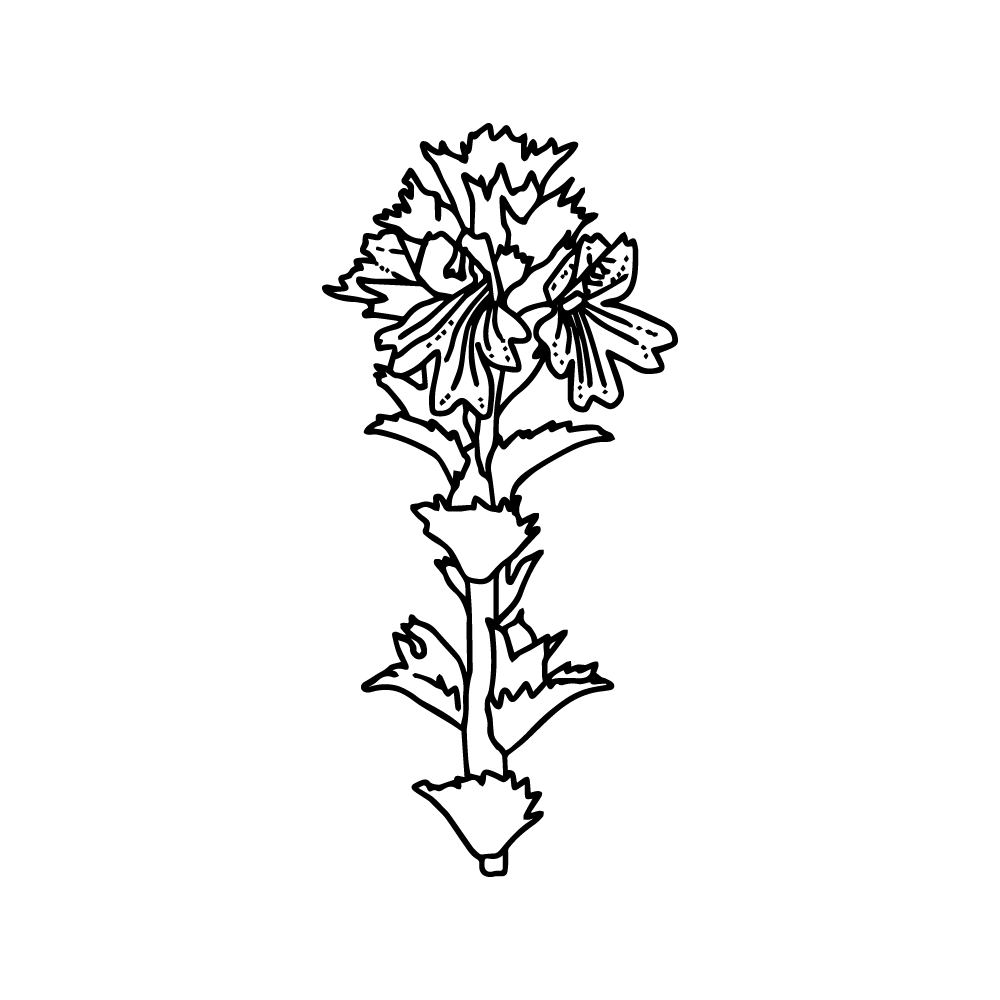Euphrasia Officinalis vector
Euphrasia Officinalis L. vector, clip art in PNG and SVG files. Euphrasia officinalis L. (euphrasia, eyebright, large-flowered eybright, red eyebright) flower vector, transparent, no background, catalog.

Euphrasia Officinalis L. (euphrasia, eyebright, large-flowered eybright, red eyebright)
An annual, semi-parasitic plant of the Scrophulariaceae family, with a weakly developed root, 10-30 cm tall. The stem is erect, simple or branched, reddish-brown, hairy. Leaves are opposite, ovate, 5-9 (12) mm long and 3-8 mm wide, toothed. Flowers 6-10 mm long, irregular, arranged singly in the axils of the bracts, at the apex of the stem and branches. The calyx is two-lobed, with 4 pairs of adult teeth. The corolla is whitish-blue with dark purple veins and a yellow spot on the lower lip, consisting of an upwardly spreading tube and a two-lobed ledge. The lower lip is 1,5 times longer than the upper lip. The fruit is an elongated, bilobed box. Blooms in June-October.
The common buckthorn is divided into many small, hard-to-distinguish species, which differ in hairiness, corolla size, colour and flowering time. The most common species in Lithuania are: Euphrasia stricta Host., Euphrasia curta Fries., Euphrasia rostkoviana Hayne and Euphrasia parviflora Schag. All species are equivalent in treatment.
Prevalence. The common buckthorn grows in meadows, clearings, clearings, playgrounds, dirt, dry slopes and roadsides.
Active ingredients. The herb contains the glycoside rhynanthine, fat, blue dye, tannic, resinous and bitter substances, minerals (copper, magnesium).
Preparation. The whole above-ground part of the plant (Euphrasiae herba) is cut for medicinal use during flowering (June-September) on a clear day. Drying in the shade or in a drying oven at 30-35 °C. The raw material is stored in bags made of dense fabric. Suitable for 1 year.
Usage. The decoction of the plant is used for atherosclerosis, its glycosides have an effect on the heart, in many cases strengthening the heart contractions. The decoction of the herb has long been used to treat eye diseases, eczema and tuberculosis of the skin in children, as well as for colds and catarrh of the stomach and large intestines. The decoction is used to wash the head (to promote hair growth).
Contraindications. It is not recommended to use it in case of low acidity of gastric juice. Meadow vetch is a poisonous plant.
Information source: https://en.wikipedia.org/wiki/Euphrasia